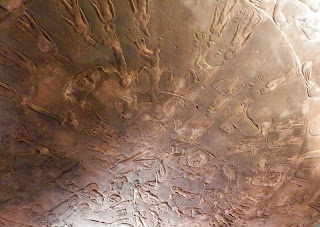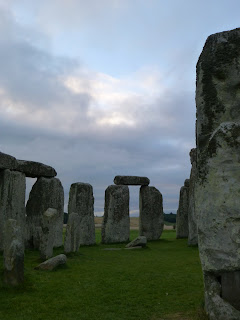The capital city of Malta, Valletta, is bustling and charming. Our group arrived by tour bus on a bright sunny morning, taking a walk up the hill to the Upper Barrakka Gardens. A spectacular view of the Grand Harbor awaited us at this highest point of the city walls.
 |
| Ft. St. Angelo |
This natural harbor has been used since 3700 BCE by many different seafaring powers. Remnants of megalithic structures, the
Kordin Temples were here long before the Phoenicians, Romans, Arabs and Knights arrived. Layers upon layers of fortifications, constructed primarily from the limestone that makes up the island, makes for fascinating strategic, political, and religious history, right up through WWII.
Valletta was, and still is, a highly fortified city, founded by the
Knights of St. John, the "Hospitallers," during their control of the islands from 1530 to 1798. Across the harbor, stands the fortress of
Fort St. Angelo, which is said to have possibly been built on the remains of a Roman temple dedicated to Juno/Astarte (I like that story). It has been built and rebuilt over the centuries by each successive power. The Knights not only fortified the town, they built one of the first "modern-style" hospitals, the Holy Infirmary "
Sacra Infermeria," here in 1574.
 |
| Valletta built into the hillside |
The city itself seems wedged into the hillside, with steep and narrow city streets that have picturesque charm with many baroque architectural elements, and little unused space.
 |
| Elevator from the quay to the town |
I was fascinated by the elevator that was said to import the sailors and ladies of the evening from sea level up to the town.

In the afternoon we toured the Grand Master's palace, which houses some exceptional 300 year old tapestries. The House of Representatives of Malta now meets in the imposing rooms with impressive frescoes interspersed with knightly armor.
 |
| Inside Grand Master's Palace |
 |
| Armor in the Palace |
The Prime Minister's offices are located in the Auberge de Castille, one of the former residences of one of the eight national groups that made up the Knights of St. John, the 'langues'. The langues seemed to like to out-do one another with lavish displays of artwork and architecture (more on that in the post about St. John's Co-Cathedral!).
 |
| Auberge de Castille |
 |
| Grand Master's Palace |
The Upper Barrakka Gardens once served as a training grounds for the Knights, and the
Grand Master's Palace was the armory, storing full suits of armor,
weaponry and swords (many on display in the palace today).
 |
| Upper Barrakka Gardens |
There is a memorial to Winston Churchill in the gardens, along with a beautiful colonnade and shaded pathways. There are many reminders of British rule, which lasted from 1801 to 1964. Churchill and Roosevelt met in Malta in February, 1945, during WWII.
We also took a short break for some delicious french pastries at Caffee Cordina, near St. John's Co-Cathedral.

One of our stops was the Archaeology Museum that displays many of the
original temple artifacts (replicas of many of the precious items are
on site on temple grounds, while the originals reside at the museum. So many unique and beautiful pieces are found at the Archaeology Museum, it deserves it's own post! Next time!



















Comments